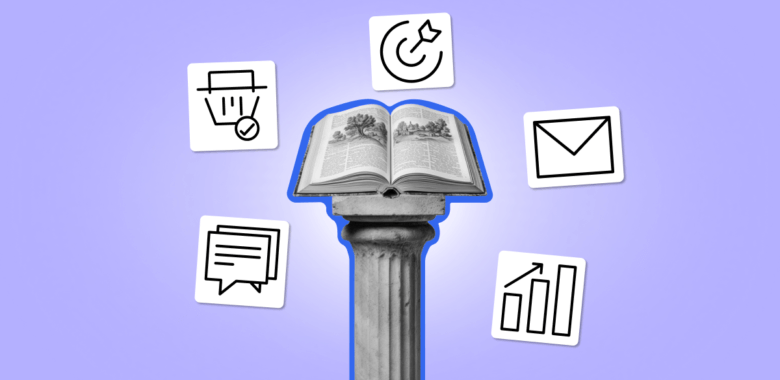Image considerations
Every marketer wants to create an image that grabs the audience’s attention and makes the email stand out. The problem is that customers may have a different attitude to the image depending on their location.
For example, an American audience may be familiar (and even bored) with types of images that can capture the attention of someone in Europe, and vice versa.
When choosing images to illustrate international email marketing campaigns, find something closely aligned with your brand and values and opt for something universally appealing, because it’s really hard to know how it will land.
Mobile-optimized email templates
Did you know that, in aggregate, 75% of web views in Africa come from mobile phones, according to Statista?
But it’s not just Africa. Globally, 62% of internet traffic is already on mobile devices. We recommend optimizing your templates for smaller devices, but when your audience is international, mobile email marketing is a priority factor for legibility and conversions!
The easiest approach here is to use responsible email templates that adapt to your subscribers’ devices for an optimal experience, no matter the platform.
Sending time
Usually, you don’t need to worry too much about the time an email is sent. Even if it arrives at 3 am, it will just wait in the inbox. (Yes, email timing can affect the open rates, but not too much. There’s a way to schedule the messages by timezone to offset that.)
That said, pay attention to limited-time offers and phrases like “Just today until midnight” that can generate frustration for international readers.
Segmenting your audience
If your international customers are concentrated in specific countries, segment the audience by region and send special region-exclusive offers and content relevant to that audience. That way, you can work on language, specific offers, and timing.
By the way, did you know that advanced segmentation is one of the biggest email marketing trends?
Email metrics monitoring
Continuously check email analytics and follow the health factors of the email marketing system: delivery rates, open rates, and click-through rates are the most important ones.
When numbers start to go down, consider if this effect is region-specific, which may indicate a problem with a local ISP, country regulation, or even a regional culture less tolerant to too-promotional emails.
It’s tough to get right at first. Focus on constant optimization to understand the ways of the audience and how each country reacts to different messaging.











